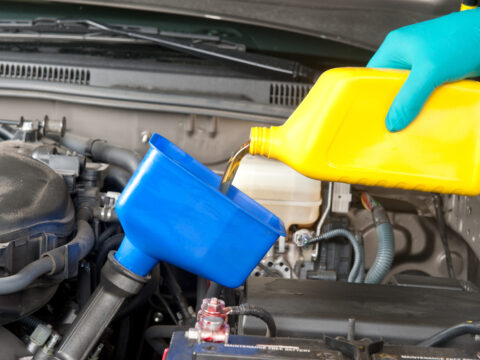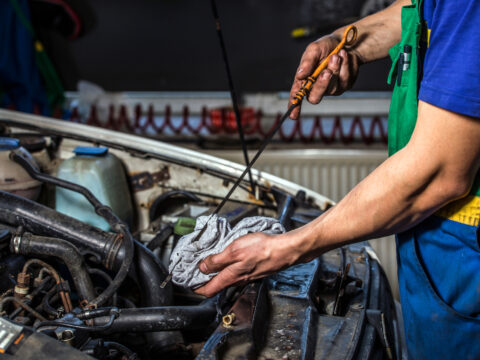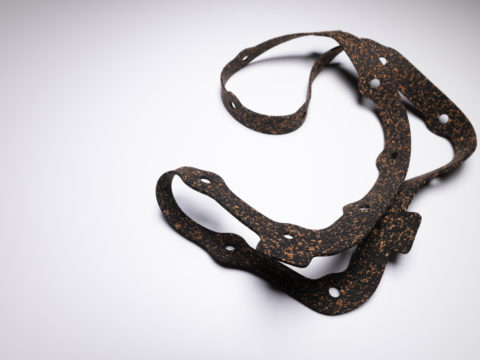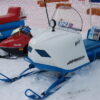There will always be some gasoline in your oil. Having excessive gasoline in your oil, though, can cause you problems.
Fortunately, you can easily tell if you have gasoline in your oil. Here is what to do if you discover that some gas has mixed with the oil.
Contents
What Does Gas Mixed with Oil Look Like?
If left alone, gasoline can pool on top of the oil. More likely, the way you will tell besides smelling gasoline in your oil is that your oil will become thin and runny.
Oil, even synthetic oil, tends to be thicker than water. Adding gasoline to the mix will thin the oil.
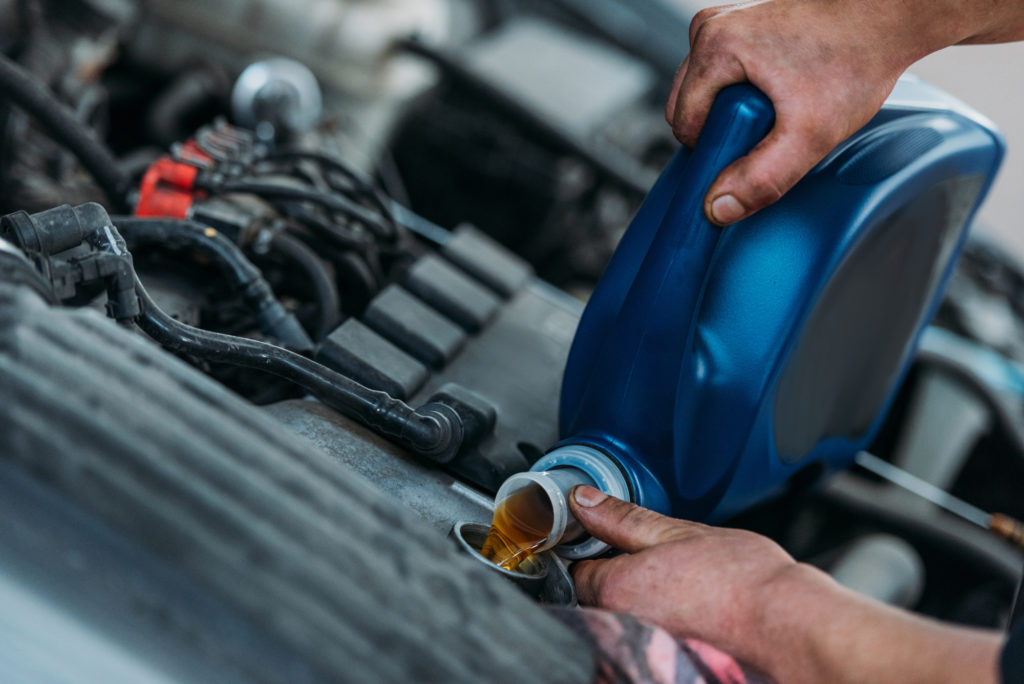
How Does Gasoline Get Into Oil?
There are several ways gasoline can get into the oil. Some oil is always present because not all the gas burns in the combustion chamber in your engine. The leftover gasoline drains into your oil pan.
Here are some ways gasoline can mix with the oil in your engine that are not part of the normal process of driving your vehicle.
1) Too Few Oil Changes
Gasoline naturally will seep into your engine oil. Although, if it is just the natural process of things, very little will get into it each time you drive. Over time, however, those amounts can add up.
Once the gasoline in your oil exceeds about 3% of the total, you will be able to smell it. As that amount increases, the odor of gas will become more pronounced.
2) Lots of Local Driving
When you drive long distances, your engine heats your oil enough to vaporize most of the gasoline present in your engine’s oil supply. When, however, you drive short distances, particularly if you turn the engine off between stops, the oil does not heat enough to vaporize the gasoline, allowing more gasoline to reside in your oil.
3) Malfunctioning Fuel Injectors
Your fuel injectors are controlled by your vehicle’s computer and help regulate the fuel-to-air mixture. The fuel-to-air ratio affects acceleration, speed, and engine consistency. If your fuel injectors are not working, they can allow too much fuel to enter into the combustion chamber, resulting in unburnt fuel; that gasoline eventually works its way into the oil pan.
4) Old, Worn Piston Rings
The piston rings in a vehicle keep the oil out of the combustion chamber and the gasoline out of the crankcase. Time and wear can rot and crack the seals, and a broken seal lets gasoline and oil mix.
5) Engine Misfire
A vehicle’s engine can take a beating, but sometimes it gets out of sorts, and its performance suffers. Maybe the gasoline has too high a water content. Or, perhaps a spark plug is broken. The solenoid might need replacing. Lots of things can happen that can lead to a misfire.
When an engine misfires, some gasoline sent into the combustion chamber will be unused and seep into the oil pan.
6) Bad Gas
Bad gasoline will burn inconsistently. That leads to excess fuel draining into the oil pan. If enough gas drains into the oil pan, you will notice it by the smell.
7) Obstructed Fuel Injectors
Fuel injectors can become partially blocked with dirt, debris, and even some of the ingredients in the gasoline formula. Blockages can cause them to be stuck in the open position. When that happens, gasoline that does not combust can make its way into the oil pan.
How Do You Tell If There Is Gasoline in Engine Oil?
There are a few ways to tell if you have excess gasoline in your engine’s oil supply. Most of them rely on your sense of smell. If you have issues smelling faint scents, you may want to enlist someone with an acute sense of smell.
1) Smell Your Dipstick
Check your oil when the engine is cool, and smell the dipstick. You should be able to smell the gasoline if it is an issue.
2) Examine Drained Oil
Either you or your mechanic (or both of you) should examine the drained oil. Primarily, be on alert for the odor of gasoline. If the drainage is significant, the odor will be impossible to ignore.
3) Check the Oil Level
If you suspect you may have gasoline in your oil, add some oil to get to a measurable level (do not add too much oil.) Run your engine, and then let it sit and cool. Re-measure your oil level. If it has increased noticeably, you likely have gasoline in your oil.
4) Look for White Smoke
As gasoline gets passed through your engine’s system, it will eventually exit via the exhaust system. It will burn when it comes in contact with hot exhaust parts, and the smoke will be white. Look for excessively white exhaust smoke that does not dissipate as your vehicle warms up.
5) You Smell Gas
If your oil has excessive gasoline in it, you will smell it, particularly when you open the hood of your vehicle. It usually smells like a lawnmower.
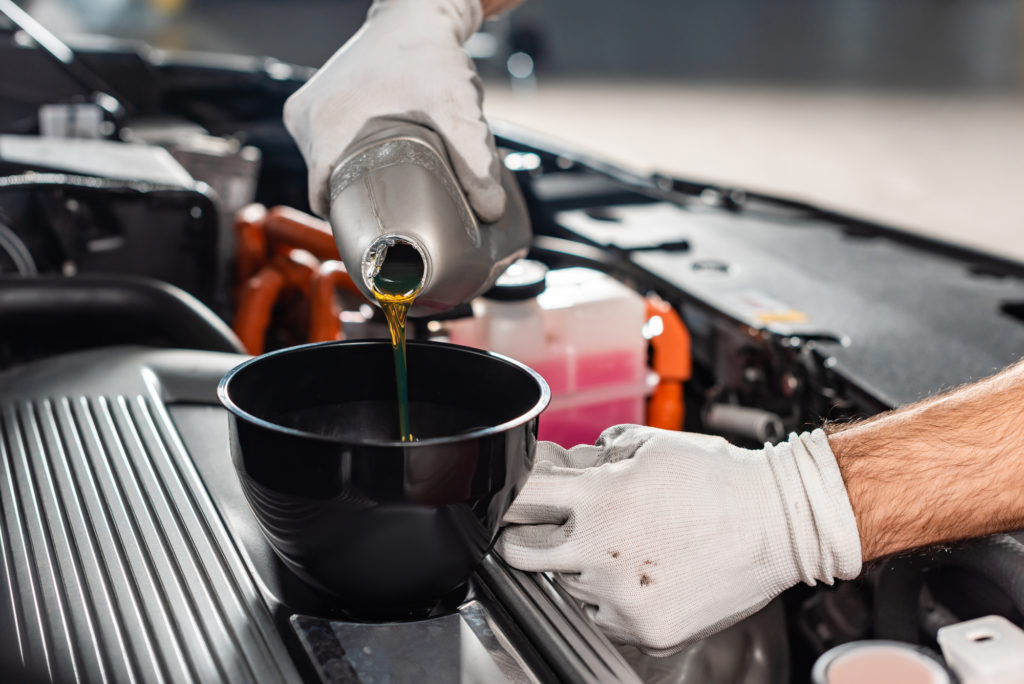
How to Check for Fuel in Oil
The best way to check if you have fuel in your oil is to use your sense of smell. You can occasionally see pooled gasoline in oil, but you have to drain your oil from your engine to see it. You will, however, smell gasoline if it is seeping into places it does not belong.
For example, you will smell it when you open your hood and maybe even before that. Your engine will smell like a lawnmower. You will also smell it on your dipstick, and if you drain any amount of oil from the engine, the smell will be unmistakable.
You can also watch your exhaust for whiter smoke than regular exhaust smoke.
How to Fix a Gas in Oil Problem
There are a few steps required to address gasoline getting into your engine’s oil supply.
Tools and Equipment Needed
It is likely your gasoline-in-oil problem is not the result of you never changing your oil, which makes the first and most important tool at your disposal a qualified, competent mechanic. Your second necessity, unless you want your mechanic to do the dirty work, is an oil-changing kit.
Step 1: Drain Your Oil
You want to see if the gasoline in your oil is the result of natural pooling or if excess gas is draining from the combustion chamber. The only way to do that is to drain the oil in your engine and remove the oil filter.
Step 2: Examine the Drained Oil
Once the oil is out of the engine, examine the oil that was drained. You may see some gasoline residue pooling on the surface. More likely, your oil will be runny and thin. It will also smell like gasoline.
Step 3: Replace the Drained Oil
Whether you fixed the problem or need to take your vehicle in, you will need to replace your drained oil. Replace the oil filter as well. Measure your oil level on your dipstick. Run the car and then let it cool.
Step 4: Measure Your Oil Level and Perform a Smell Test
Once your vehicle has cooled, check the dipstick and smell for gasoline. When your engine is cold, measure the oil level. If it has increased by more than an eighth of an inch, you have some other fluid draining into your oil pan. Likely, that is gasoline. You will also be able to smell the gas.
Step 5: If You Still Have Gasoline in Your Oil, Get Your Vehicle Checked Out
Unless you are a mechanic and have all the necessary tools, if you still think or know you have gasoline in your oil at this point, you need to take the vehicle in and get it checked out. A mechanic can run tests to determine the exact cause as well as the steps necessary to fix it.
Will Gas in Oil Harm Your Engine
If the gasoline in your engine is part of the natural combustion process and subsequent draining, it is normal and will not hurt your engine as long as you change your oil regularly. If, however, there is excessive gasoline in your oil, it can harm the engine.
The most pronounced way gasoline in your oil can do damage is by thinning the oil and reducing its viscosity. Oil’s viscosity is what makes it an excellent lubricant. When it thins, it provides less protection to moving parts in your engine. This can lead to excessive wear and tear as well as high temperatures.
Both are enemies of your engine. Either one can lead to parts wearing down or even breaking. If that happens, you have a much more expensive issue on your hand than just a simple fuel injector or sensor replacement.
Should You Drive Your Car with a Gas and Oil Mixture?
You should not drive your vehicle if the gasoline in your oil is noticeable. If you suspect you have an issue, your best strategy is to drive your car to your mechanic and let them diagnose whether you have gasoline in your oil.

